MO House in the woods by FRPO
The rooms of this wooden house in a forest near Madrid by local architects FRPO branch off in different directions to slot into gaps between the trees (+ slideshow).
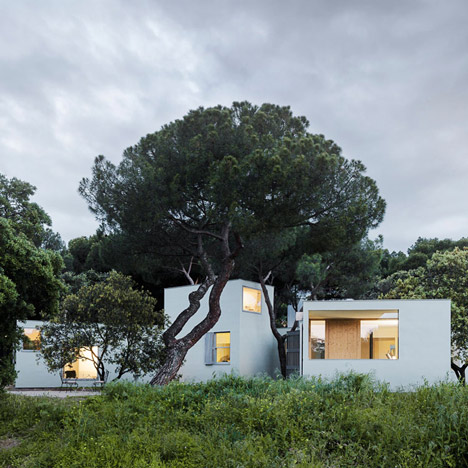
FRPO was asked to design a family home that was sensitive to its natural environs and chose to distribute the rooms across the site in a series of interconnected boxes.
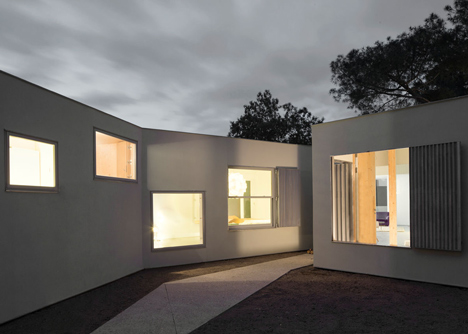
"The powerful presence of the trees and the wish to have a house integrated in the woods led to a disaggregated solution," said the architects.
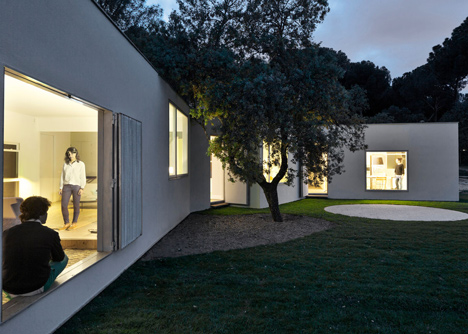
Several possibilities for the position of the various boxes were explored before the architects settled on the most suitable solution.
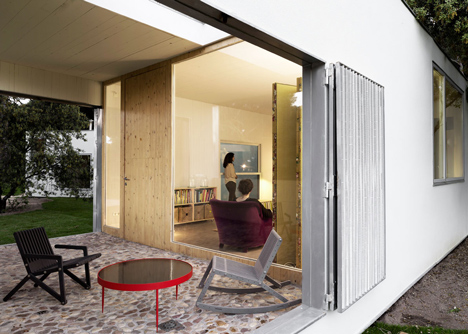
The boxes nestle beneath the branches of the trees, which also occupy spaces between the numerous angled external walls.
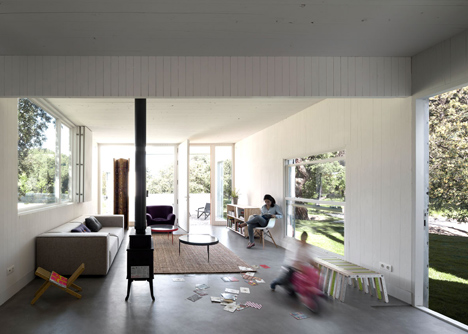
The building is constructed from cross-laminated wood panels that remove the need for destructive foundations and provide excellent thermal insulation.
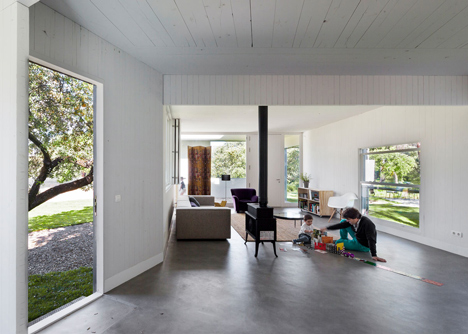
FRPO explained that the choice of wood allowed them to create a structure that is "insulating, continuous, lightweight, precise and extremely thin," and described it as "wood in the woods."
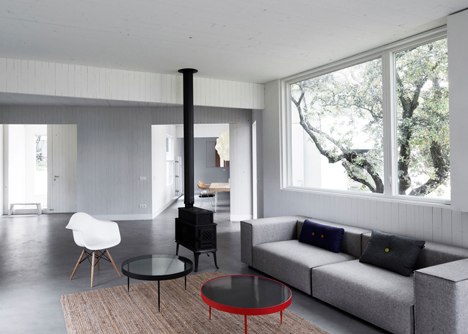
The wooden theme continues inside the building, where painted timber panelling covers the walls, and a table with a thick wooden top occupies the dining room.
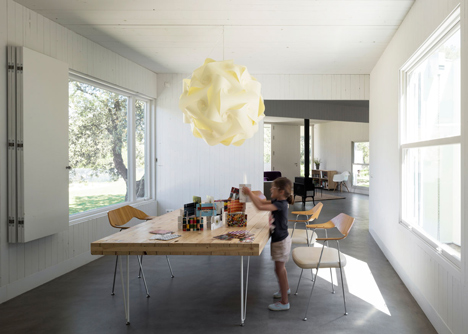
From an entrance at the centre of the plan, corridors branch off towards the master bedroom and two rooms for the family's children at one end of the house, and a kitchen, dining area and living room at the other end.
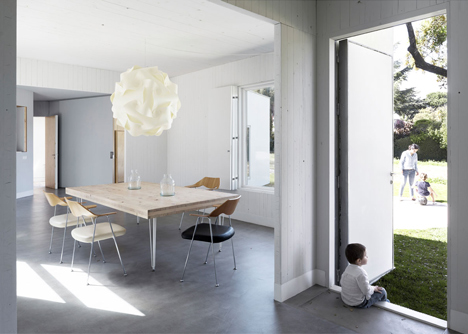
A single taller box contains a study space that is accessed by a spiralling staircase.
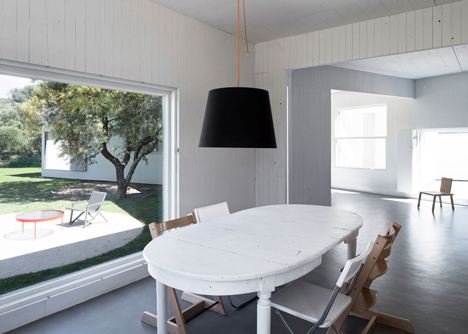
Photography is by FRPO, Miguel de Guzmán.
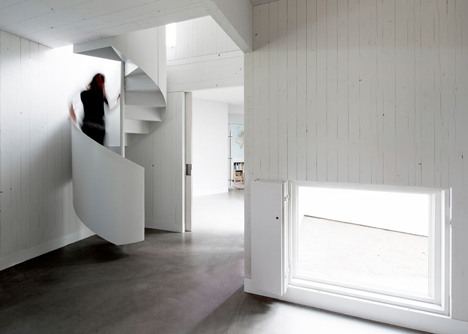
Here are some more details from the architects:
MO House by FRPO
Systematic freedom
In 2010 we received a commission to design a single-family house in a forest in the outskirts of Madrid. Although the programmatic requirements were conventional, the site would demand a complex geometry. The powerful presence of the trees and the wish to have a house integrated in the woods led to a disaggregated solution. The program was transferred in a very direct and natural way to a number of simple rectangular pieces. The different topological relations between the pieces determined a series of useful solutions, 24 in the end. The optimal version was selected and the plan of the MO House was this way defined.
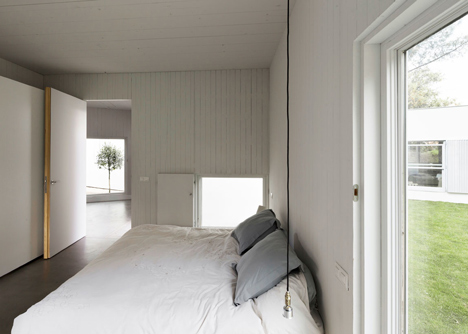
The MO House project belongs to a family of projects developed in the office beginning in 2005. These projects explore the possibilities of generating architectural complexity out of the combination of simple elements. Throughout this process of projects, conditioned by a large number of specifications settled by the clients, we have been forced to systematize every design decision in order to simplify the process to its full capacity. The results produce a nice surprise: the combination of a number of extremely simple spaces offer an extremely rich spatial experience. We have found a powerful tool to work with. We can use this system in very different situations. Some very simple basic rules and a series of pieces with adequate proportions will result in an endless range of solutions.
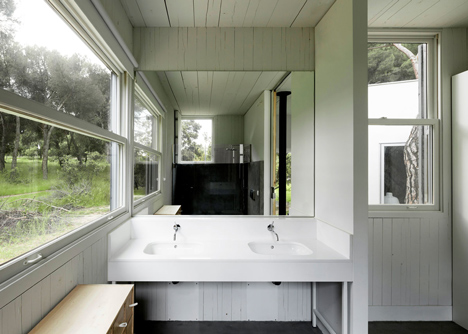
Wood in the woods
The final arrangement of the MO House plan opened two technical issues that put the solution into question: the high variety of angles in the joints between pieces and a penalized shape factor that would result in a negative impact on the energetic performance of the house (an elevated façade-volume ratio). In addition to that, another key issue aroused: proximity of trees required a little aggressive foundation system.
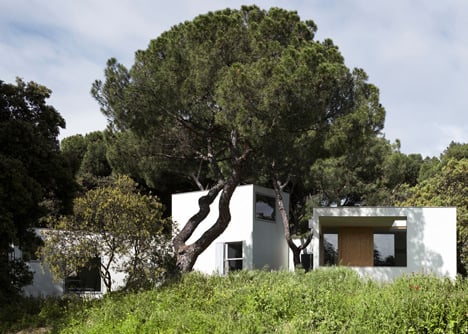
The technical solution adopted in a first approach – steel skeleton with concrete slabs – did not seem viable. We needed a lighter system that could be assembled in a more accurate way. It had to be simple – like the plan – and thermally favourable. On a visit to his studio, a friend showed us a cross-laminated wood panel by KLH. The product met all the requirements: a solid structural material with high insulating performance and CNC manufactured at their Austrian factory. The house would be solid wood. Wood in the woods. 72 mm thick walls. Slabs from 95 to 182 mm.
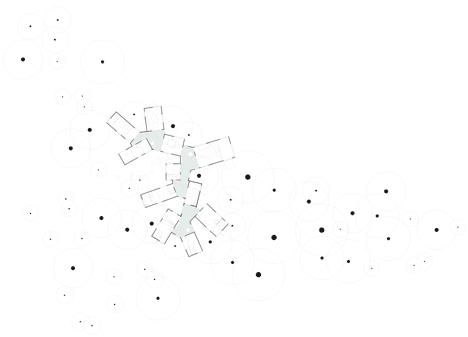
The total weight of the structure would not reach one third of a conventional system. The foundations could therefore be made of galvanized steel micropiles only 2 meters long. The panels would be manufactured by numerical control cutting, ensuring accuracy at all angles. The structure would be insulating, continuous, lightweight, precise and extremely thin. The floor of the house could be a direct transposition of the work scheme. The installation process would be fast and accurate.
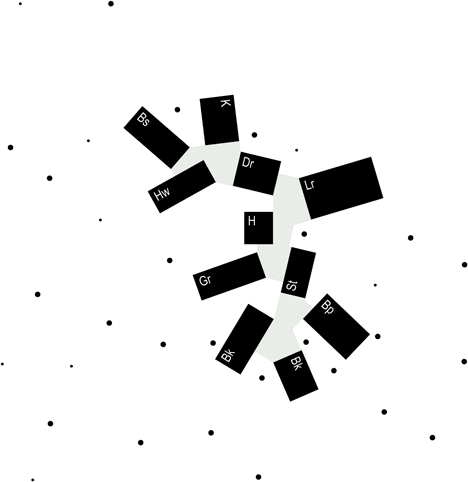
The nature of the project remained intact and its technical requirements had led us to the discovery of a new field of project possibilities.
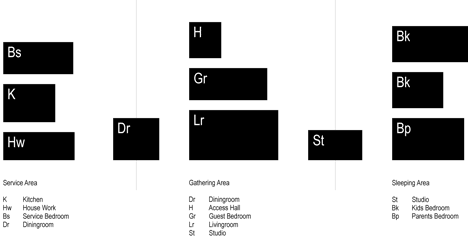
Location: Madrid, Spain
Program: housing
Project start: 2010
Project completion: 2012
Surface: 295 m2
Architecture: FRPO Rodriguez & Oriol ARCHITECTURE LANDSCAPE, Pablo Oriol, Fernando Rodríguez.
Collaborators: Pastora Cotero, Inés Olavarrieta, Cornelius Schmitz, Cristina Escuder
Contractor: Alter Materia, Grupo Singular
Consultants: KLH, Alter Materia, Miguel Nevado
